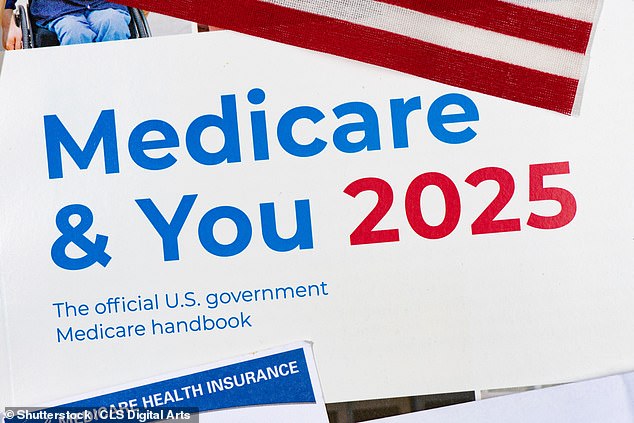Retirees face another financial hit thanks to a sharp rise in the cost of healthcare.
The increase in the cost of Medicare Part B is expected to outpace the annual increase in Social Security’s cost-of-living allowance next year, as well as the overall rate of inflation.
Medicare Part B, which covers expenses such as doctor visits, outpatient hospital services and some home health care, currently costs seniors $174.70 a month.
However, this rate will increase from $10.30 to $185 per month next year, the Centers for Medicare and Medicaid Services (CMS) said.
CMS attributes the increase to both rising program costs and increased anticipated use by seniors.
This change means that many retirees will have to spend more of their monthly income on healthcare, which could further squeeze budgets amid the rising cost of living.
Medicare costs will rise more than inflation next year
Medicare Plan B’s 5.9 percent increase is higher than annual inflation, which rose 3.2 percent in the year through October.
It is also a larger increase than next year’s cost of living adjustment (COLA), which will be 2.5 percent for next year.
The annual COLA increase is based on a specific inflation measure called the Consumer Price Index for All Urban Wage Earners and White-collar Workers (CPI-W).
This tracks price changes that urban wage earners and white-collar workers pay for a basket of common consumer goods and services.
‘When Part B premiums grow at a faster rate than COLA increases, (health care) costs consume an increasing portion of monthly Social Security checks,’ independent Social Security policy analyst and Medicare. Mary Johnson told USA Today.
However, the situation is not unusual. Medicare Part B premiums have outpaced COLA increases for years, leaving seniors increasingly broke.
Part B premiums rose on average 5.5 percent each year between 2005 and 2024, while COLAs averaged just 2.6 percent each year over the same period.
“The disparity is due in part to Medicare costs not being included in the consumer price index currently used to calculate the COLA,” Johnson explained.
The new Part B increase will be deducted from Social Security checks in January.
This comes after seniors criticized next year’s COLA increase, complaining that it is not enough to combat the rising cost of living.

Seniors will face another hit as Medicare costs rise more than Social Security increases
Since then, older Americans and senior groups have expressed disappointment in the increase, which they say does not reflect their changing spending after years of high inflation.
Meanwhile, Americans living in nine states have collected less Social Security since September due to an increase in taxes.
Recipients who live in Colorado, Connecticut, Minnesota, Montana, New Mexico, Rhode Island, Utah, Vermont, or West Virginia may have to pay more.
The exact impact will depend on the state you live in and your overall income.

